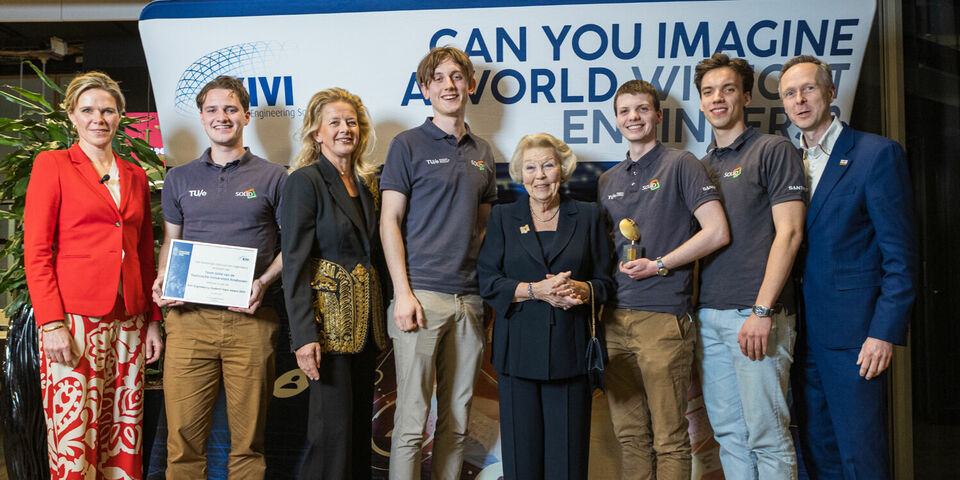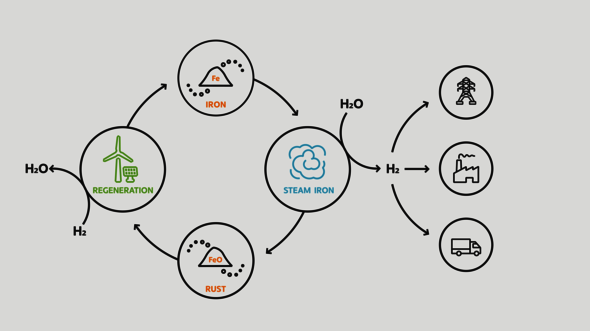The KIVI Engineering Student Team Award has been presented every year since 2022 to student teams with innovative solutions to help raise greater awareness for their project. Student team Solid is working a solution for hydrogen storage and transport. This is seen as an important solution for a sustainable energy transition because it can help reduce CO₂ emissions from industries with high energy consumption.
The student team’s solution lies in small iron balls, which can be used safely and are recyclable. “They can be transported compactly to a location where hydrogen is needed,” says Team Manager Joost van der Kraan. “On paper, our technique is safer than current techniques involving ammonia.”
The text continues below the photo.
The team was presented with the award in the presence of Princess Beatrix and Princess Mabel. It was a tad awkward, says Van der Kraan. That was because during the award ceremony, a video pitch made by the team was shown. “We had been told to make a video, but that it was just for PR purposes, so I quickly put something together on my phone. This was during Carnival, and I didn’t feel my best. And then it was shown to the Royal Highnesses not just once but two times.” And it stood out: “The other teams had created very polished videos.”
Market-ready
“Solid’s project could be a breakthrough with great impact for the industry, not only at the national level, but also at the global level. And that is of great value in achieving the goals of the energy transition,” reads the report of the award ceremony by The Royal Netherlands Society of Engineers (KIVI). The student team is therefore encouraged to continue pursuing their mission.
“We’re absolutely moving forward with this,” says Van der Kraan. “The next step is to set up a large-scale project with several industry partners. In three years, we want to have the technology at a level that industry can take it further.”



Discussion